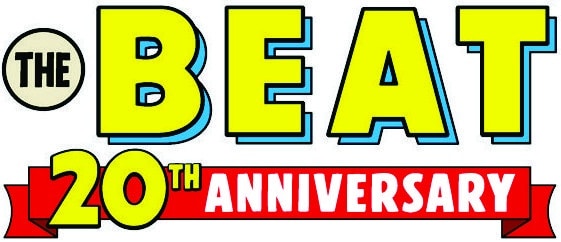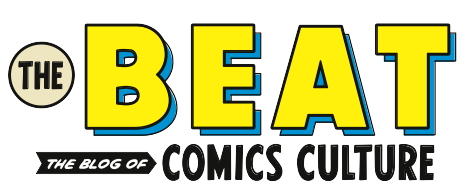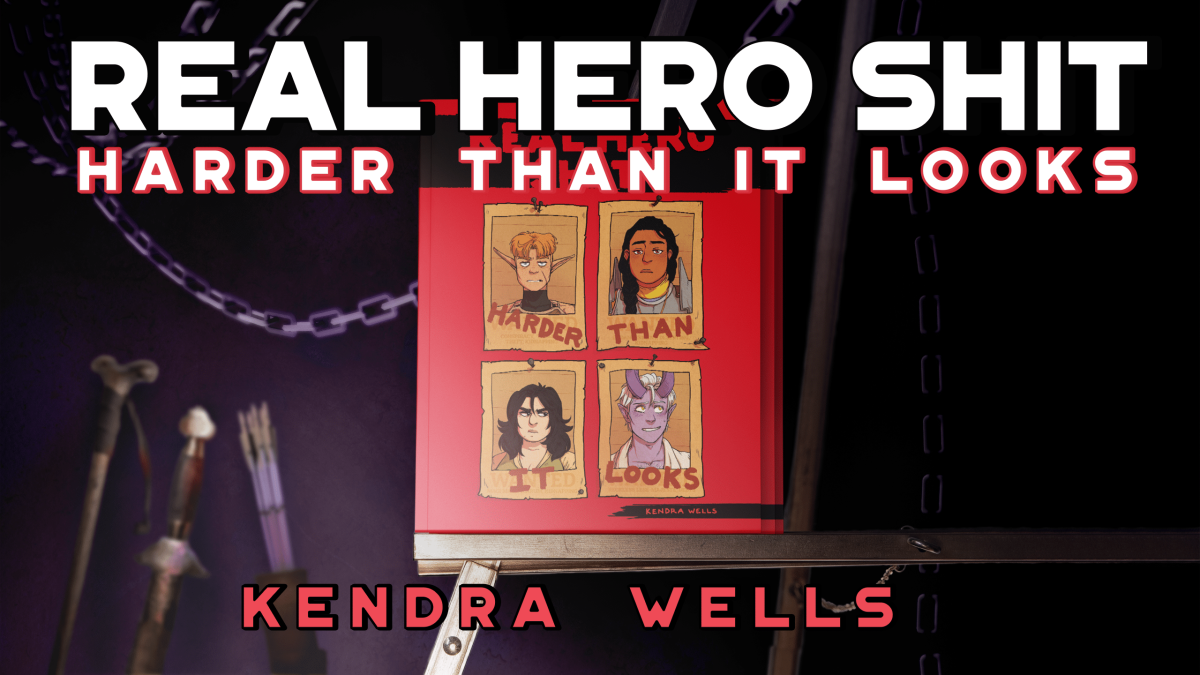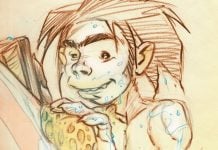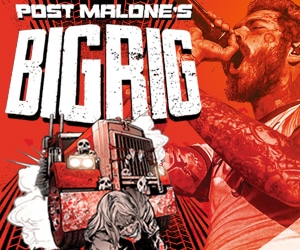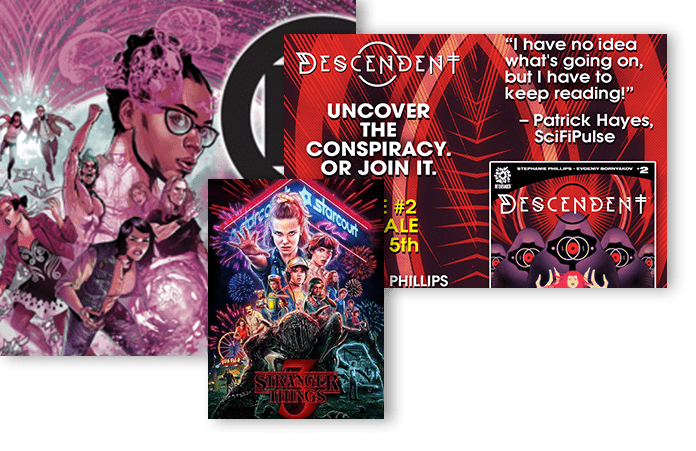Fully funded in 12 hours, Real Hero Shit 2: Harder Than It Looks is the next installment in the Real Hero Shit series by Kendra Wells. It’s like a D&D campaign you started with your homies while being three drinks in: It’s horny, queer, and hilarious.
For the uninitiated, Real Hero Shit (which I am convinced is a riff on Megan Thee Stallion‘s phrase “Real Hot Girl Shit”) is about four adventurers: Michel, a rogue; Ani a secular red mage; Hocus, a religious white mage; and Prince Eugene who is a hedonistic, sheltered asshole (affectionately). Trouble ensues, humor ensues and cultural commentary ensues with equal measure.
When the Kickstarter launched, I was chomping at the bit to get to interview the creator Wells, and pick their brains about what’s in store for this volume, future(?) volumes, and their creative approach. Here are the results of our conversation.
E.B. HUTCHINS: What has the reception to Real Hero Shit meant to you, especially from queer readers or fans who see themselves in your characters?
KENDRA WELLS: It means a hell of a lot! Comics is a profession of solitude, and it’s hard to work for years and years on a story without knowing how people will respond to these characters. The main cast in Real Hero Shit is majority queer and/or trans, and is also majority obnoxious and slutty and rude! Seeing people respond positively to them in a time where even the safest and most sanitized queer stories are brigaded against by fascists and losers feels like a huge win. I am so thankful to have found an audience who appreciates a story like Real Hero Shit.
HUTCHINS: How did your approach to writing and illustrating Real Hero Shit 2 evolve from the first volume?
WELLS: RHS1 was my first time writing and drawing a book by myself, and I spent a lot of it not sure where my limits were. This time around, I took all my limits and punted them down the road. RHS2 is 50% longer, 50% darker, and 50% hornier. I wanted to escalate the story and the art from the first volume: this is a bigger, badder book. I want to continue to make bigger and badder books.
HUTCHINS: Did you face any particular narrative or artistic challenges while expanding the world and characters in this sequel?
WELLS: Against their sound advice, I begged my editor (Kel McDonald) to let me make this volume longer than the first. Writer-Kendra was excited to have more space to explore the story, but Artist-Kendra bore the weight of actually having to draw it all. There are multiple fight scenes, multiple crowd scenes, multiple and varied environmental settings. Meanwhile, I had to learn an entirely new drawing program from scratch after getting contentiously divorced from Adobe Photoshop. I don’t necessarily recommend the “fuck it we ball” method but so far its working out alright for me.
HUTCHINS: Your work often merges humor with social commentary. How do you strike that balance in this book, especially when the story touches on deeper political themes?
WELLS: This is my own personal coping mechanism, but I feel like the only way to deal with something is to laugh about it. There is a real absurdity in class struggle, religious oppression, gender identity, sex stuff… making a joke about it can make it less scary and a little easier to contextualize. It’s a Trojan horse to optimism, or at least understanding.
HUTCHINS: Prince Eugene is such a unique protagonist: chaotic, queer, and flawed. How did his character evolve in this sequel, and what parts of yourself or others inspired him?
WELLS: What’s interesting about RHS2-era Eugene is he hasn’t changed all that much from the first book. If anything, he is continuing to be blasé and careless and is finally starting to see some consequences from that. This book takes place about six months after the first book ends, and Eugene still behaves as though his time with the other three is a wacky adventure rather than a job they do to make a living. He comes from a very sheltered place of immense privilege as the future ruler of the entire continent they live on and is deeply ignorant of the way his actions affect his friends’ lives both in a political and personal way. Certain things happen in Harder Than It Looks that finally begin to open his eyes a little bit.
HUTCHINS: I noticed that Hocus uses neopronouns (e/em/eirs), which even for queer representation is relatively rare, what was the inspiration for that and will we see more characters with this gender identity in future installments?
WELLS: Hocus uses e/em/es pronouns (or they/them in a pinch), which was directly inspired by my friend Maia Kobabe’s use of e/em/eir pronouns. I had very little familiarity with neopronouns before learning about Maia’s experience choosing them for emself, and it inspired me to build a broader cultural relationship with gender in the world of RHS. There is a gag in book one where Hocus whips out a complicated flowchart of how es pronouns work, which is funny to me as a nonbinary person constantly having to explain my gender and also helps me show readers what the origins are. Hocus’s native culture and language uses five different sets of pronouns as their gender markers, so Hocus’s use of e/em/es reflects es identity as a person who would be largely understood as assigned male at birth, but e doesn’t identify as a man or a woman.
This brief explanation was all we got about Hocus’s background in book one, but in the sequel, we explore a lot more deeply into Hocus’s connection with es people (or lack thereof). Even if e doesn’t fully know why yet, there is a reason Hocus holds onto such a strong cultural identity even as it seems to conflict to es role as a Holy Legion Guard and devout servant to Avah, the goddess of the monotheistic primary culture of the Kingdom of Marble.
HUTCHINS: Your visual style is vibrant and kinetic. Were there any new visual influences or experiments in RHS2 you’re particularly proud of?
WELLS: To be honest, I feel like a dog chasing a car in regard to movement and action in my comics. I have watched a lot of One Piece movies and various titles from Studio Trigger and am constantly taking notes on the way those animators can push and pull and exaggerate movements. I find I am happiest with my work when I lean into the cartoonishness and stop worrying so much about realism and plausibility. Never let literalism get in the way of good art.
HUTCHINS: Is this series something you see continuing for multiple volumes? What’s your dream direction for these characters?
WELLS: In my heart, Real Hero Shit has always been a four-book series. There was no guarantee that I was going to be able to continue the story after book one, so I had to intentionally give it an ending that could feel satisfying while also leaving room for future adventures. Thankfully, people really responded well to it and I’ve been able to keep making more. God willing and the creek doesn’t rise, I’ll be able to do two more sequels after this.
As for their direction, I think all four of them are going to experience a pretty shattering revelation at one point or another, and will have to make a choice about how they react to it. They become increasingly entangled in each other’s lives, for better or for much, much worse. Speaking of worse, who is Eugene’s dad, anyway? What’s up with the church? Why is Michel so sketchy? All will be revealed… eventually.
HUTCHINS: Outside of Real Hero Shit, are there any other projects or themes you’re excited to explore next?
WELLS: Tell No Tales, the middle-grade graphic novel I made with Sam Maggs, may or may not be getting a highly-anticipated follow-up. I also have two projects on the back burner with my co-creator Lauren Kayes: one a monsterfucky gay vampire western (fondly codenamed “Brokebacula”), and a regency-era enemies-to-lovers fantasy story about a misanthropic failed artist hired to paint the portrait of the golden child of a pleasure house full of dark secrets. We’re looking for a home for those last two, for some reason it’s difficult to find a publisher interested in stories with such universal and marketable themes as those.
Other than that, I have big dreams about adapting something into animation and doing more writing-only projects. I love making comics with all my heart but man alive they’re a lot of work. Unfortunately, I will continue to do them until I die.
